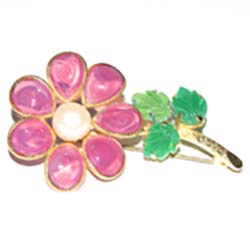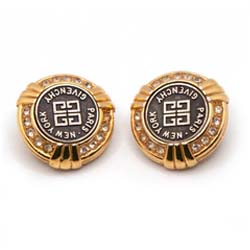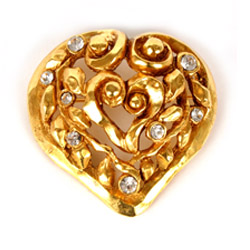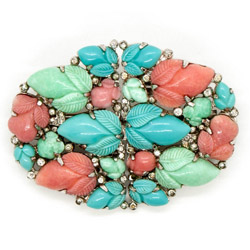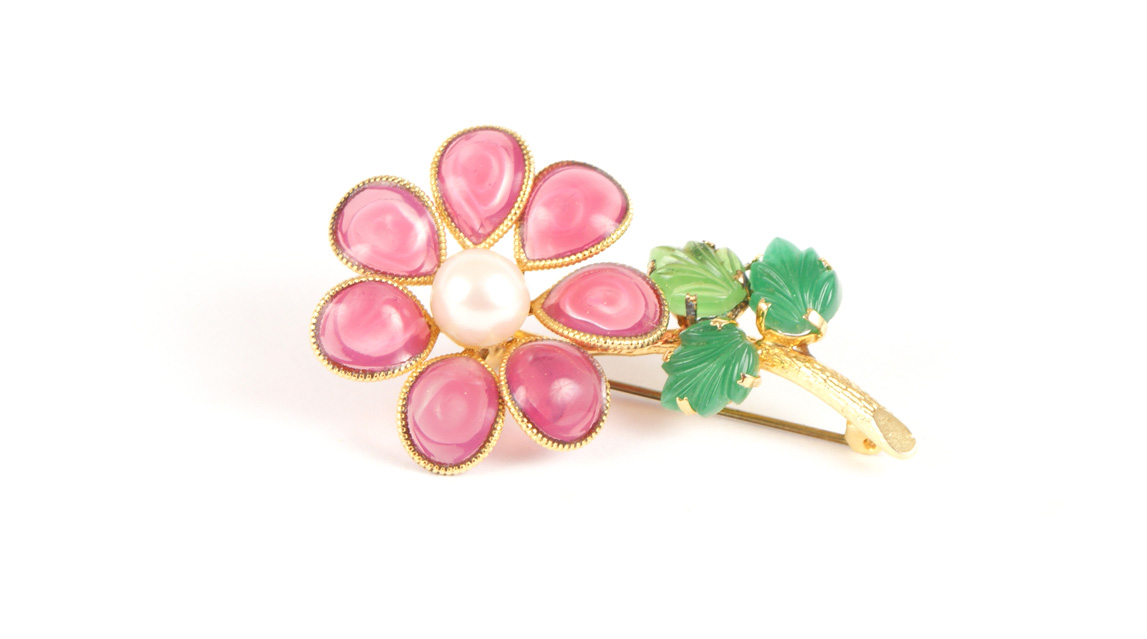Paste, Glass, Crystal… What’s the difference?
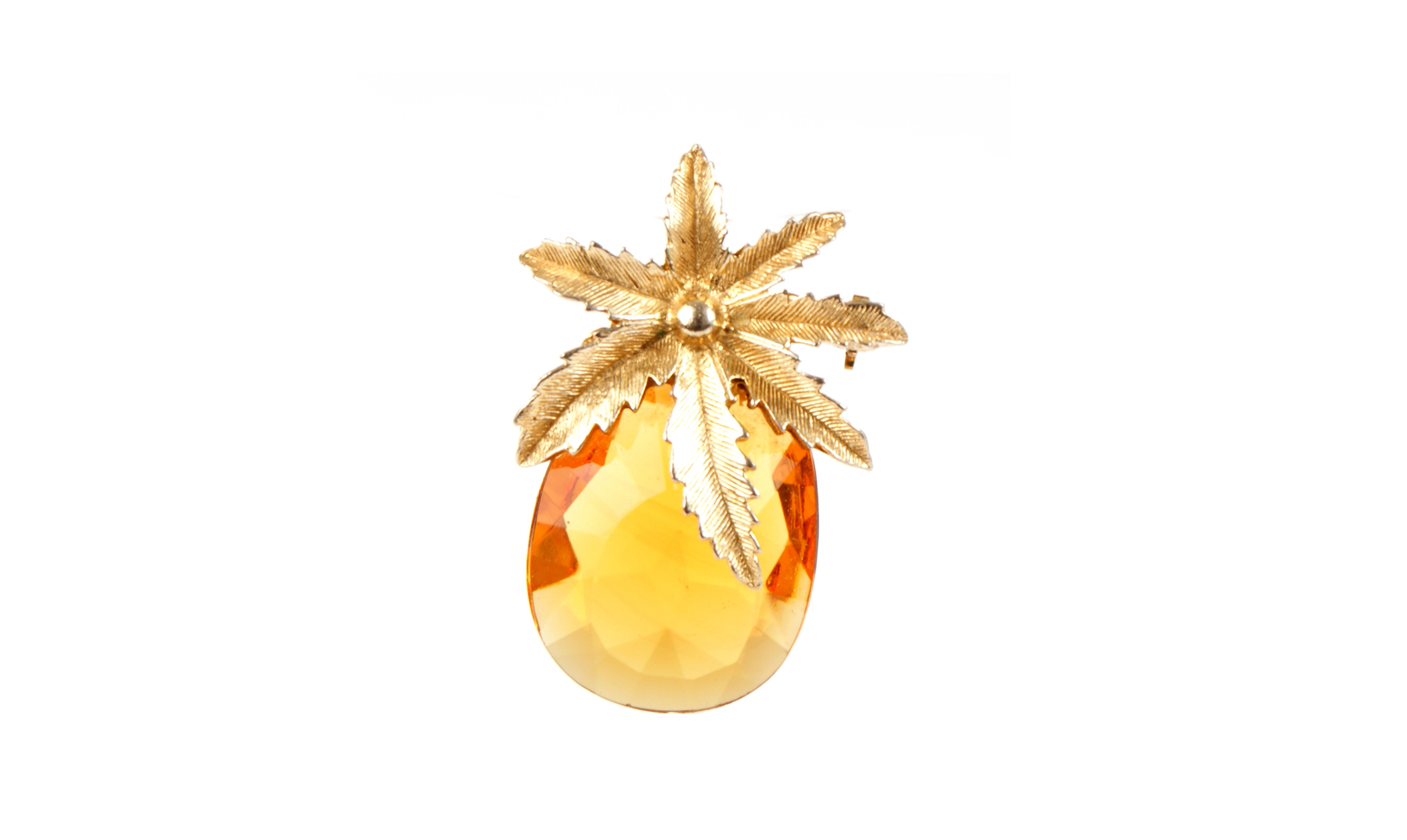
You’ll often see the terms paste, glass or crystal used in descriptions for vintage jewellery. Are they different?
Paste is glass
More specifically, paste refers to leaded glass that has been ground down, packed into a mold, fired, and melted. The glass is then faceted and polished to make it resemble a gemstone. Glass stones are often placed on foil backings to increase the reflection of light and to enhance the colour.
Poured vs Molded Glass
Costume jewellery makers such as Trifari produced beautiful examples of molded glass jewellery. Their dogwood flowers range from the 1950s features molded petals of milk glass. Trifari's 'fruit salad' range of pieces often featured molded glass stones. A terrific example is this Trifari clip mate brooch with pastel glass.
Producing a piece of jewellery via the poured glass method differs from the molded glass method by eliminating the grinding and kiln firing of the glass. The maker melts glass directly into the metal frame that will be part of the finished piece of jewellery. The poured glass method is said to produce 'gemstones' of greater transparency and deeper colour than the more common molded glass method.
Is all glass jewellery Gripoix?
You’ll often see jewellery featuring any kind of glass decoration described incorrectly as Gripoix. In fact Maison Gripoix is a French jewellery maker that specializes in poured glass decoration.
They perfected a process, pate-de-verre, in the early 20th century that allowed glass to be poured into intricate, brightly coloured patterns.
They are most famous for the jewellery they produced for the House of Chanel but they also made jewellery under their own name and still do today.
This video by Gripoix demonstrates the poured glass method beautifully:
Is a crystal glass too?
In a scientific context, crystals are solid objects whose atoms are aligned in regular repeating patterns. In the jewellery world, crystals are pieces of leaded glass made to look like gemstones.
Why are Swarovski crystals special?
Swarovski is an Austrian company that patented a highly precise crystal production process. Their crystals are also made with a leaded glass but their cutting process is more complex than most, achieving a higher degree of light refraction and therefore a higher amount of sparkle. The lead content of their glass is also high, around 32%, which increases the sparkle of their crystals as well.
Their patented production methods ensure that they’re able to produce consistent crystals on a large scale.
Is glass Just a cheap alternative?
Not at all! Glass has been used in jewellery for centuries. The Georgians were especially fond of it, often using glass gemstones in fine gold and silver settings. Glass ‘gemstones’ are still used today in fabulous pieces produced for the biggest fashion houses. Glass stones can be produces in shapes, sizes and colours that might not be available otherwise, creating show stopping, collectible, jewellery.

